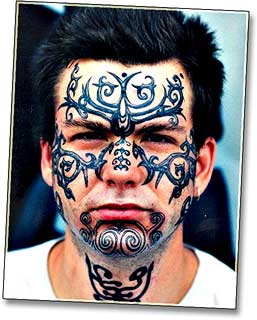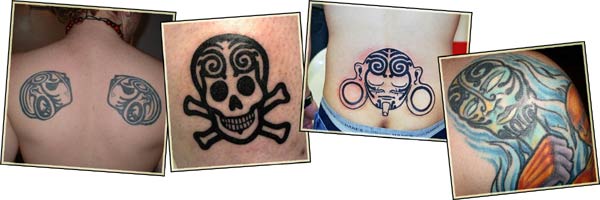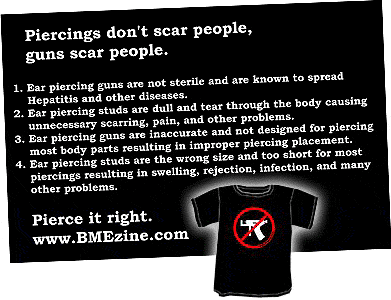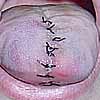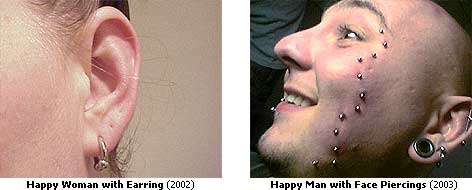
|
“The only freedom which deserves the name is that of pursuing our own good in our own way, so long as we do not attempt to deprive others of theirs, or to impede their efforts to obtain it.”
– John Stuart Mill
Over the past few months there’s been an upsurge in ludicrous “studies” — shallow covers for dubious statistics and ill-informed “medical” statements from doctors less concerned with truth and more concerned with using the letters after their name to put forward their personal prejudices — which decry various forms of body modification as dangerous and a threat to public welfare. As a result, legislators are being called upon to ban or restrict these activities in a misguided attempt to “protect” the public from itself.
First, let me just say this: FUCK OFF AND KEEP YOUR LAWS OFF MY BODY.
Second, let me apologize for the profanity and follow up by saying this: You’re a bunch of hypocrites and bigots that are using shoddy science in an attempt to force your sociopolitical views on others and you should be ashamed of yourselves.
A recent study released by the European Union, and now being cited by media and lawmakers all over the world, makes perverse claims such as tattoo ink being made of car paint, states that up to fifty percent of piercings become seriously infected, and links a multitude of serious diseases and even several deaths to body modification.
As far as their claim of “tattoo ink being car paint”, it is true that many of the same dyes are used in tattoo ink as are used in car paint… but those same FDA approved dyes are used in food products, medical products, and so on — guess what — some cars have components made of stainless steel and titanium. Does that mean we should ban body piercing because “piercing jewelry is made of car parts?” The human body contains a significant amount of fecal matter at most times; because of that, I’d like to urge that Philippe Busquin, the EU commissioner responsible for this deceptive report, be flushed down the toilet for being a big walking turd.

The statement that “up to fifty percent of body piercings lead to acute infections which require medical treatment” is frankly preposterous and is, to put it politely, a lie. Millions of piercings are done every year. Millions. If Busquin’s claim was true, body piercing would be one of the largest medical emergencies humanity has ever faced. The truth of the matter is that body piercings rarely become acutely infected and medical treatment being required is extremely uncommon.
As far as linking diseases, primarily due to largely false stereotypical claims of unhygienic environments in tattoo and piercing studios, this is yet another fraudulent claim. The number of documented cases are rare, tend to be limited to unlicensed studios, and are becoming less and less common. I think it’s important to note that it was tattoo and piercing studios that, due to their strict adherence to contamination control, eventually forced dentists and estheticians to clean up their own acts. The Red Cross had major problems with their blood supplies due to irresponsible contamination control and as a result infected far more people with deadly diseases than the body modification industry ever has.
The claims of deaths are also deceitful — yes, there are a small number of deaths that are linked to body piercing, but what’s left out is that the piercing is rarely responsible for the death; it simply complicates existing medical sitations such as mitral valve relapse (and in all cases that I am aware of, these conditions were hidden from the piercer). I can think of only one or two cases where the piercings could be directly linked and in these cases the victim had behaved in a deeply irrational and irresponsible fashion (a la Lesley Hovvells) — after all, you can kill yourself with a hammer if you hit yourself over the head enough times… but that’s not how a hammer ought to be used.
I think maybe we need to do some comparison now. They tell us that of millions of people who get body modifications, vast numbers experience serious problems or even death — although given that the actual documented number of these “millions” is a handful at best, I’d love to know where they’re getting their information. In any case, let’s look at a few things that we know cause deaths:
Automobiles
Car crashes kill and maim an enormous number of people yearly, to say nothing of the environmental damage they are responsible for. At least 90% of all personal transportation (which accounts for almost all road fatalities) could be replaced by mass transit infrastructures which would be safer and cleaner than personal vehicles — tens of thousands of lives would be saved yearly, if not more. If the risks of body piercing are significant enough to justify new regulations and restrictions, then surely we should ban private ownership of automobiles.Junk Food
Perhaps the leading cause of premature death in the West, the culture of obesity and sloth that our megacorporations have embraced is rarely questioned, even though it not only strains our healthcare systems, but the planet itself. In 2001 the Surgeon General announced that every year 300,000 people in the US die from obesity-related causes — and 60% or more of Americans are currently obese. The American Cancer Society cites similar statistics, saying that over half of cancer is obesity related…If we can propose banning or restricting body modification for a few infections and some dubiously linked deaths, how can we stand by and allow (and encourage) young people to overindulge in a lethal drug that’s killing a million people every three years — to put this into perspective, obesity kills six times as many Americans every year as died in the entire Vietnam war. Ban junk food if you want to save lives.
Conversation
How many people have died because of the argument they got into with their neighbor? Or on a larger level, how many people have died because their country’s leader got in a meaningless argument with the leader of some other country? If we feel that the freedom of expression embodied in body modification is dangerous enough to restrict it, then it should be obvious that the far more dangerous freedom of speech should definitely be banned as well. Since the law is blind, we must ban free discourse of all kinds in order to protect the citizenry.Marriage
How many people kill their spouses every year? How many cuckolds kill their spouse’s lover? How many kill themselves from the stress of a relationship? How many of their children do? Going by the cold numbers — especially now that we know that more than 50% of marriages end in divorce — it’s clear that marriage is a threat to society and human life that far outweighs the risks of body modification. If we are to act objectively, marriage and dating should be banned.Religion
How many millions of people have been murdered in the name of one god or another? How many billions more have been repressed or abused for the same reason? Objectively, if body modification needs to be banned for being a danger, we’d best eliminate religion altogether. God may not be as dead as Nietzsche claimed, but in our objective legal society we surely must legislate his death.
Yeah, that’s right. The above is stupid and flawed thinking that any intelligent person should be appalled to stand behind… so we have to ask ourselves why intelligent people are doing this exact thing to a dramatically more ridiculous level when it comes to body modification?
They are doing it for one simple reason: bigotry.
They are launching preemptive strikes in a culture war.
The arguments that they present to defend their cases are deceptive and flimsy and never hold up under the light of any logical examinations. It’s very sad that we can proudly trumpet what free societies we all live in, yet when anyone steps outside the narrow definition of normal (as defined by “the man”), we twist words to try and justify denying them those freedoms. Freedom is a universal and borderless concept — we can’t stop someone from expressing themselves just because we think it’s “gross” (that’s really what this boils down to).
Papers are reprinting these claims constantly — please, if you see such an article in your local paper, don’t be afraid to write in and punch holes in their lies… It’s only because too few people are afraid to stand up for themselves that this is allowed to continue.
Good luck,

Shannon Larratt
BME.com

